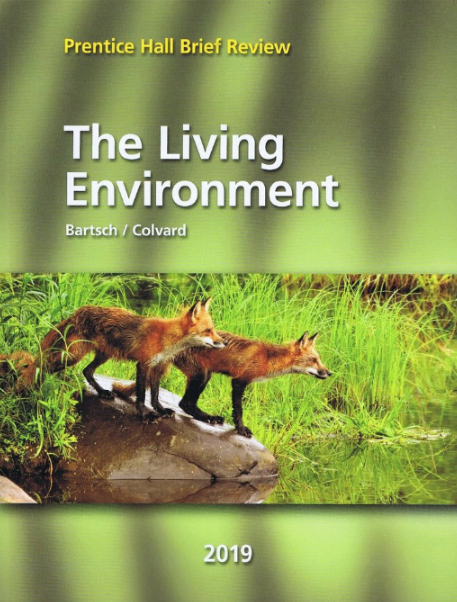Home Page
Textbooks
Prentice Hall Brief Review: The Living Environment 2019
Section 5.1: The Theory of Evolution

Prentice Hall Brief Review: The Living Environment 2019
John Bartsch, Mary P Colvard
ISBN: 9781418292164
Textbook solutions
Chapter 1: Similarities and Differences Among Living Organisms
Section 1.1: The Characteristics of Life
Section 1.2: Cells: The Basic Structure of Life
Section 1.3: The Cell Membrane
Section 1.4: Multicellular Organisms
Page 15: Practice Questions
Chapter 2: Homeostasis in Organisms
Section 2.1: Basic Biochemical Processes of Living Organisms
Section 2.2: Feedback and Homeostasis
Section 2.3: Disease as a Failure of Homeostasis
Page 38: Practice Questions
Chapter 3: Genetic Continuity
Section 3.1: Heredity and Genes
Section 3.2: Genetic Code
Section 3.3: Genetic Engineering
Page 55: Practice Questions
Chapter 4: Reproduction and Development
Section 4.1: Types of Reproduction
Section 4.2: Cell Division
Section 4.4: Applications of Reproductive Technology
Page 74: Practice Questions
Chapter 5: Evolution
Section 5.1: The Theory of Evolution
Section 5.2: The Mechanics of Evolution
Section 5.3: Patterns of Change
Page 93: Practice Questions
Chapter 6: Ecology
Section 6.1: Organisms and Their Environment
Section 6.2: Population Interactions
Section 6.3: Energy Flow Through an Ecosystem
Section 6.4: Diversity Benefits Species and Habitats
Section 6.5: Environmental Changes
Page 116: Practice Questions
Chapter 7: Human Impact on Ecosystems
Section 7.1: Need for Awareness and Understanding
Section 7.3: Human Activities and the Loss of Diversity
Section 7.4: The Impact of Technology and Industrialization
Page 138: Practice Questions
Chapter 8: Scientific Inquiry and Skills
Section 8.1: What Is Science?
Section 8.2: Scientific Inquiry
Section 8.3: Further Science Understandings
Page 160: Practice Questions
Chapter 9: Laboratory Skills
Section 9.1: Tools for Measurement
Section 9.3: Additional Laboratory Technique
Section 9.4: Observing Plant and Animal Specimens
Section 9.5: Laboratory Safety
Page 183: Practice Questions
All Solutions
Section 5.1: The Theory of Evolution
Exercise 1
Step 1
1 of 2
The answer is 2. Evolution is defined as the transformation or change of an individual during several generations. It it dependent on the way natural selection works.
Result
2 of 2
2
Exercise 2
Step 1
1 of 2
The answer is 4. Evolution is defined as the transformation or change of an individual during several generations. It it dependent on the way natural selection works.
Result
2 of 2
4
Exercise 3
Step 1
1 of 2
The answer is 1. Studying fossils are one way of knowing the history of life forms or even nonliving things that were present in the history. Fossils are hardened rocks that have organisms embedded to it and preserved its form or shape.
Result
2 of 2
1
Exercise 4
Step 1
1 of 2
The answer is 1. As seen in the diagram of branching species, we can see that both Anthropoda and Annelida have the same ancestor which is the Protozoa. All of the other choices are wrong because they do not comply with the diagram.
Result
2 of 2
1
Exercise 5
Step 1
1 of 2
The answer is 2. As shown in the diagram, humans and apes have the same lineage. This means that they have come from the same ancestor which is the primates.
Result
2 of 2
2
Haven't found what you were looking for?
Search for samples, answers to your questions and flashcards

unlock
